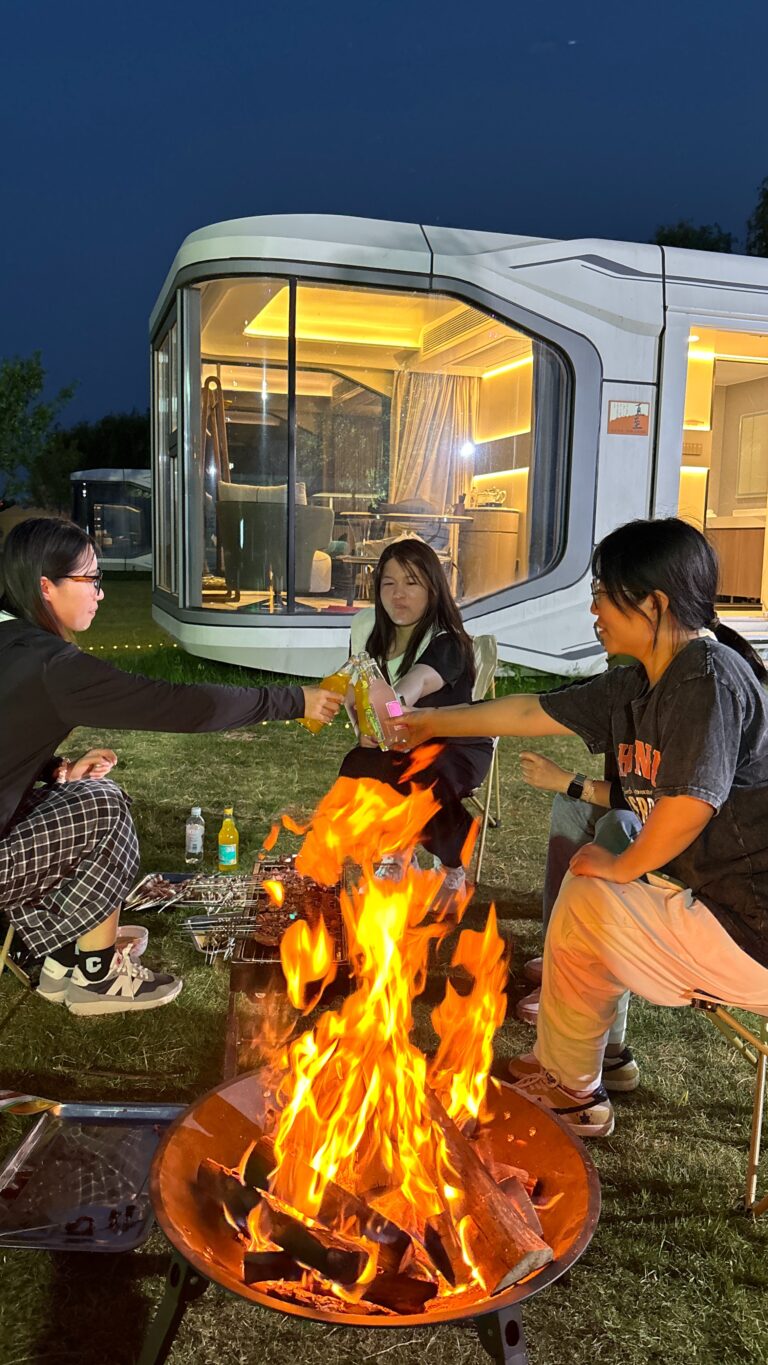Market Prospects of Space Capsule Products: An Economic Perspective
Introduction: The Intersection of Innovation and Economic Value
In recent years, space capsule products—once considered niche or futuristic—have rapidly emerged as viable, scalable, and economically attractive solutions across multiple industries. With their modular construction, intelligent design, and adaptability to different environments, these capsules are transforming traditional spaces used for tourism, commerce, education, and even healthcare.
From an economic standpoint, space capsules represent high-ROI, low-footprint investment opportunities, combining cost-efficiency with innovation. This article offers a detailed analysis of the market demand, return on investment, and the cross-sector potential of capsule-based infrastructure.

1. Growing Market Demand: The Shift Towards Compact, Flexible Infrastructure
1.1 Changing Consumer Preferences
The global population is increasingly drawn to minimalist, experiential, and mobile living options. Space capsules cater perfectly to these preferences by offering:
Compact luxury: High-end design in a small footprint
Mobility: Easy transportation and setup in remote or urban areas
Immersive experiences: Seamless integration with nature or cityscapes
1.2 Post-Pandemic Adaptation
Post-COVID, there’s an increased demand for private, contactless, and self-contained spaces. Space capsules naturally align with this shift, making them highly attractive to travelers and property developers alike.
2. Investment Perspective: High ROI and Operational Efficiency
2.1 Initial Capital vs. Return
Compared to traditional construction or hotel development, space capsules offer significantly lower upfront investment. Key economic advantages include:
Factory prefabrication reduces labor and onsite construction time
Modular design allows for easy scalability and phased investments
Lower operational costs, including maintenance and utilities
For example, a single luxury capsule unit used as a glamping suite can recover its cost within 12–24 months, depending on location and nightly rates.
📈 Sample ROI Breakdown:
| Item | Traditional Cabin | Space Capsule |
|---|---|---|
| Construction Time | 4–6 months | 1–2 weeks |
| Cost per Unit (est.) | $40,000–$80,000 | $20,000–$45,000 |
| Average Daily Rate (ADR) | $150 | $180–$250 |
| ROI Period | 3–4 years | 1–2 years |
Note: These figures vary based on design complexity, land cost, and target market.
3. Cross-Industry Applications: Beyond Tourism
While tourism is currently the most prominent market, the versatility of space capsules opens up vast opportunities in other sectors:
3.1 Commercial Applications
Pop-up Retail Stores: Quick-deploy capsules for seasonal markets or brand activations
Mobile Offices: Remote workstations for construction sites or tech nomads
Compact Cafés or Kiosks: Stylish, standalone F&B modules with quick ROI
3.2 Educational Use
Mobile Classrooms: Used in rural or disaster-hit areas for temporary or mobile schooling
STEM Learning Pods: Capsules designed as interactive learning environments for science and tech programs
On-campus Study Pods: Compact, soundproofed capsules for university libraries or shared campuses
3.3 Healthcare & Emergency Use
Medical Isolation Units: Ideal for quarantine or rapid-deployment clinics in emergencies
Mobile Consultation Rooms: Private pods for remote diagnostics or mental health services
First-Responder Bases: Quick-setup units for field hospitals or disaster response
4. Market Segments & Global Opportunities
The global space capsule market can be segmented into the following areas:
| Sector | Potential Application | Market Opportunity |
|---|---|---|
| Tourism | Eco-resorts, glamping, urban pods | Very High |
| Retail | Pop-up shops, vending stations | High |
| Education | Mobile classrooms, study pods | Medium-High |
| Healthcare | Field hospitals, clinics | High (esp. in emergencies) |
| Real Estate | Compact rentals, modular homes | Growing |
With growing demand for cost-effective, flexible, and smart infrastructure, developing countries, resort destinations, tech-forward cities, and emergency-prone regions represent key growth markets.
5. Sustainability and Long-Term Economic Value
Sustainable development is no longer optional—it’s a necessity. Space capsules align with green building principles:
Minimal land impact: No need for deep foundations or disruptive construction
Energy-efficient design: Solar panels, insulated walls, and smart systems
Reusability & Mobility: Capsules can be relocated, repurposed, or resold
This not only appeals to eco-conscious travelers and governments but also future-proofs investments by meeting ESG (Environmental, Social, Governance) criteria.
Conclusion: The Economics of Innovation
Space capsule products are no longer just a design novelty—they are a strategic investment. Backed by real-world application success and rising market demand, their appeal spans industries and continents.
For investors, developers, and governments, the decision to deploy capsule infrastructure is about more than aesthetics—it’s about flexibility, profitability, and future-readiness.
As smart cities, eco-tourism, and mobile infrastructure continue to grow, space capsules will undoubtedly play a central role in shaping the next chapter of the global built environment.



